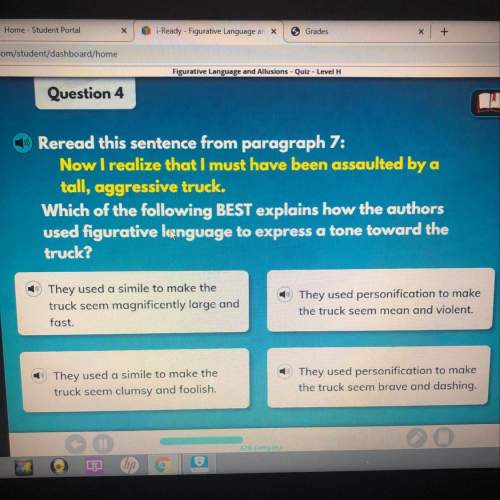
English, 16.04.2020 20:51 maksimgelmud7
PART A: Which of the following best states a central theme of this poem? A Love is a beautiful thing, and something not worth settling for. B Sometimes life's worst hardships are preferable to the pain that can be experienced from love. C Ask for what you wish for most in life, and sometimes you shall receive. D Loneliness is the worst kind of suffering.

Answers: 1


Another question on English

English, 21.06.2019 16:30
Is the point in the oaqs method where you would you look for more information, a definition, or interpretation.
Answers: 2


English, 22.06.2019 05:50
[1] nothing that comes from the desert expresses its extremes better than the unhappy growth of the tree yuccas. tormented, thin forests of it stalk drearily in the high mesas, particularly in that triangular slip that fans out eastward from the meeting of the sierras and coastwise hills. the yucca bristles with bayonet-pointed leaves, dull green, growing shaggy with age like an old [5] man's tangled gray beard, tipped with panicles of foul, greenish blooms. after its death, which is slow, the ghostly hollow network of its woody skeleton, with hardly power to rot, makes even the moonlight fearful. but it isn't always this way. before the yucca has come to flower, while yet its bloom is a luxurious, creamy, cone-shaped bud of the size of a small cabbage, full of sugary sap. the indians twist it deftly out of its fence of daggers and roast the prize for their [10] own delectation why does the author use the words "bayonet-pointed" (line 4) and "fence of daggers" (line 9) to describe the leaves of the yucca tree? . to create an image of the sharp edges of the plant to emphasize how beautiful the plant's leaves are to explain when and where the plant grows to show how afraid the author is of the plant
Answers: 1

English, 22.06.2019 06:30
Read the excerpts from "the royal house of thebes" and "the story of a warrior queen." "we are women," she told her sister. "we must obey. we have no strength to defy the state." "choose your own part," antigone said. "i go to bury the brother i love." "you are not strong enough," ismene cried. "why, then when my strength fails," antigone answered, "i will give up." she left her sister; ismene dared not follow her. —"the royal house of thebes" again and again the romans were defeated, till it almost seemed as if the britons really would succeed in driving them out of the country. boadicea herself led the soldiers, encouraging them with her brave words. "it is better to die with honor than to live in slavery," she said. "i am a woman, but i would rather die than yield. will you follow me, men? " and of course the men followed her gladly. —"the story of a warrior queen" how are the archetypes presented in these two passages different? the first passage shows antigone as a warrior, and the second passage shows boadicea as a tragic heroine. the first passage shows antigone as a tragic heroine, and the second passage shows boadicea as a sage. the first passage shows antigone as a rebel, and the second passage shows boadicea as a warrior. the first passage shows antigone as a villain, and the second passage shows boadicea as a sage.
Answers: 1
You know the right answer?
PART A: Which of the following best states a central theme of this poem? A Love is a beautiful thing...
Questions

Mathematics, 12.02.2021 01:20



History, 12.02.2021 01:20

Mathematics, 12.02.2021 01:20



Mathematics, 12.02.2021 01:20




Mathematics, 12.02.2021 01:20

Physics, 12.02.2021 01:20

Mathematics, 12.02.2021 01:20

Biology, 12.02.2021 01:20

Mathematics, 12.02.2021 01:20




Mathematics, 12.02.2021 01:20




